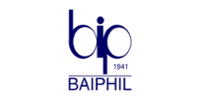Event Details
Program Overview:
The turmoil in the world is continuing – with increasing public unrest, fluctuating oil prices, natural disasters of a scale thought unimaginable, volatile stock markets, conflicts, a pandemic and climate change
In this time of global uncertainty how do you steer a course through these difficult times as a financial institution or a service-oriented organization?
Many organizations have realized that an Enterprise Risk Management (ERM) approach designed around the organizations business portfolio, strategies and plans are needed to predict, evaluate, manage and measure its performances.
This has ensured that risks that were previously managed in isolation can be aggregated and prioritized across the entire business as a single dashboard that aligns to the business goals and strategies.
In this session, we are no longer just focusing on the ERM framework and its program implementation but more on the effectiveness and its alignment to the organizations Vision, Mission, Values and Objectives and key results.
It goes one step further. Risks are evaluated based on business materiality. A new understanding of the risks then emerges, and efficient controls can be implemented to tackle what really matters to the business. In short, the focus becomes strategic value creation instead of risk management & avoidance.
Duration:
2 day (16 hours)
Learning Objectives of the Program:
• Implement appropriate and varied techniques for the identification and assessment of risks
• Generate measurable value by aligning the Enterprise Risk Management (ERM) framework with corporate performance expectations
• Engage the Board in the analysis of enterprise risk scenarios
• Foster a culture that reinforces appropriate risk-taking to balance value creation and value protection • Implement Key Risk Indicators (KRI's) for each line of business
• Enhance achievement of corporate objectives by linking performance targets, and risk management actions
Who should attend?
Chief Financial Officers, Compliance Directors, Chief Risk Officers, Board of Directors, CEO's, COO's, Chief Audit Officers
Program Structure and Outline
Day 1
8:30am – 12:00pm
Taking Enterprise Risk Management (ERM) to the Next Level
• Characteristics of an Advanced Enterprise Risk Management (ERM) Process
• Board-level commitment to ERM
• An ERM culture driving engagement and accountability inside the organization.
• Engagement of stakeholder's strategy development and policy setting
• Transparency of risk communication to all levels
• Integrating financial and operational risk into decision making
• A move from focusing on risk avoidance and mitigation to exploitation techniques.
• Exercise: Risk avoidance techniques – pros and cons? Keeping Your Eye on the Ball
• Painting the Big Picture of your organization's enterprise risks
• Identifying principal risk factors (sample case study)
• Focusing on risk events that impair the enterprise objectives.
1:15pm – 5:00pm
Exploring Enterprise Risk Management (ERM) Scenarios
• Understanding organizations Risk Attitude
• Defining risk from need to get things right – not what can go wrong.
• 'Ring fencing', guarding the failure of one part of business from impacting other parts.
• Communicating your Risk Attitude to all levels in the organization & 3rd party
• Exercise: How to establish a Risk Attitude
Day 2
8:30am – 12:00pm
The Enterprise Risk Management (ERM) Roadmap
• How to review & assess the current ERM Environment
• Develop ERM roadmap for companywide implementation.
• Exercise: Review of an assessment method Enterprise Risk Management (ERM) Risk Measurement Techniques
• Risk Measurement Methods
• Understanding quantitative / qualitative risk analysis
• Ishikawa diagrams (fishbone analysis)
• Failure mode and effect analysis (FMEA)
• Scenario planning
• Root cause analysis
• Monte Carlo analysis
• The pros and cons of the various methods
1:15pm – 5:00pm
Key Risk Indicators (KRI's)
• How to see pitfalls / banana skins ahead
• Examples of KRI's • How to develop effective KRI's
• Exercise: Review existing KRI's to best practices Risk Appetite and Risk Tolerance
• What is risk appetite?
• The difference between risk appetite and risk tolerance
• Defining risk limits
• Risk profiling
• Developing risk appetite statements
• Exercise: Creating Risk appetite statements Wider Aspects of Enterprise Risk Management (ERM)
• Ensuring your assurance providers roles e.g. Internal Audit, Compliance, Risk Management, Insurance, Security alignment to avoid duplication of effort
• How to incorporate internal audit agreed actions in your risk register?
• Ensure environmental risk is taken seriously thru ESG (even if you are in a sector such as Financial Services
• Ensuring Business Continuity plan covers all eventualities thru testing
Resource Speaker: Mr. Kama Neson Ganeson
Schedule: 27-28 February 2023 (Monday-Tuesday, 8:30 AM - 5:00 PM)
Training Fee per Participant:
From Member Institution – P 4,480.00
From Non-Member Institution – P 6,720.00
(The old rates will still be applied to this webinar)
**VAT inclusive
Feb 27 & 28, 2023 GMT+8
